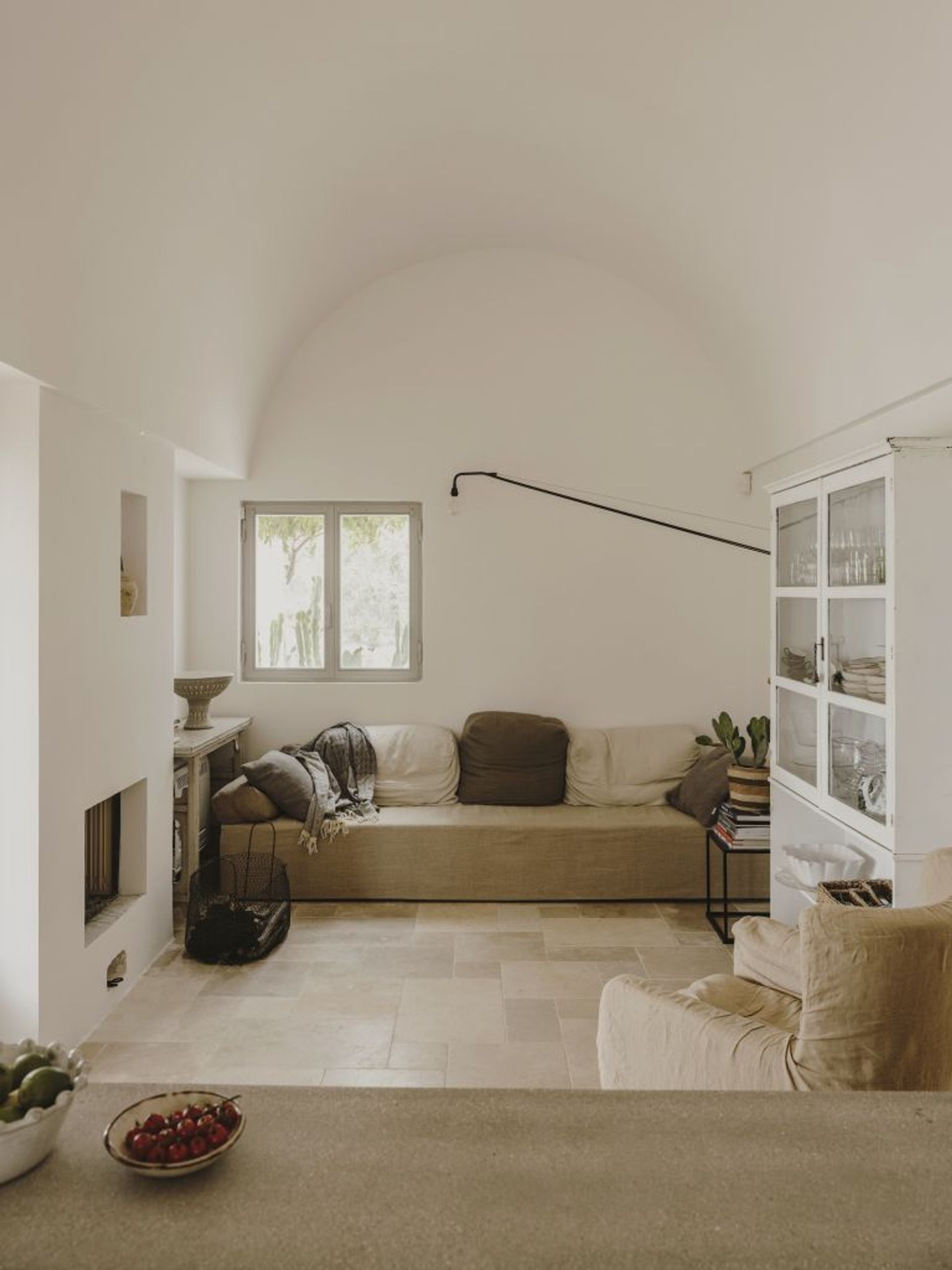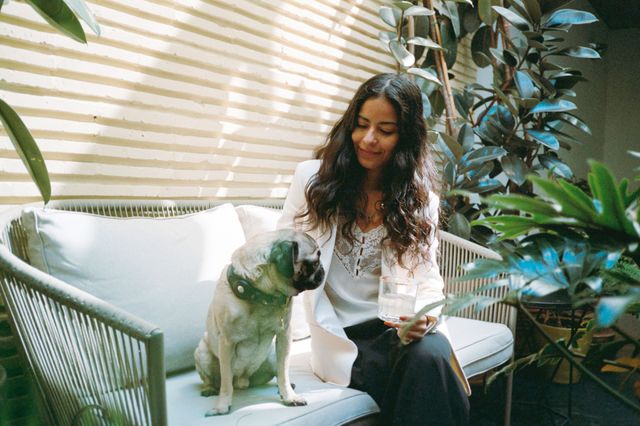Conversation with Designer Andrew Trotter
- Category
- Q&A
- Written by
- Roshan McArthur
- Published
- April 30, 2019

Andrew Trotter is delightfully ubiquitous. He’s the designer behind two of our favorite Italian properties – the live-work-gallery space Numeroventi in Florence and the dazzling white hotel Masseria Moroseta near Ostuni in Puglia. The latter was carefully created over three years, a typical Pugliese farmhouse among the olive trees, yet with very modern design and environmental sensibilities. His latest design Villa Castelluccio (also in Puglia) has just joined our collection and again showcases his ability to transform traditional architecture into imaginative but simple modern homes.
But there’s much more to Andrew than imaginative restorations. Over the years, he has traveled the world and turned his hand to a wide range of design projects, and today he edits the magazine Openhouse, a forum for creatives around the world who open their homes and other private spaces for cultural events.
It’s a concept that’s very close to our hearts, so we decided it was time we found out more.

YOU’VE COVERED A LOT OF GROUND IN YOUR CAREER, LITERALLY AND CREATIVELY. CAN YOU WALK US THROUGH YOUR JOURNEY SO FAR?
I’m from the north of England, the Yorkshire Dales, but moved to Australia when I was sixteen. I really wanted to be an architect, but I didn’t want to build big buildings, so I studied interior design. All I was interested in was doing houses. I worked a little bit for Anouska Hempel when I moved to London, and then I got into fashion and worked for Yohji Yamamato then for Persuade in Bilbao.
In 2011, I moved to Barcelona and opened a little design shop called Openhouse. It wasn’t a good time for shops in Barcelona so I opened a gallery for photography in my house with my flatmate, photographer Mari Luz Vidal.
At roughly the same time, my friend Carlo Lanzini asked me to help him find an architect to help design his hotel Masseria Moroseta in Italy, and I said, ‘Let me do it.’ I was super excited to finally build a piece of architecture. It’s a modern-day masseria, or farmhouse, simple and elegant. But it’s also still a working farm. Then not long after, guests who stayed at Moroseta asked me to design Villa Castelluccio.

HOW WOULD YOU DESCRIBE YOUR APPROACH TO RESTORING HOMES?
I want to keep the feeling that it’s an old building. I don’t like to make a place feel too new. In places like Tuscany, and southern Europe in general, architects take old buildings and renovate them so perfectly that they just look like fake old buildings. I prefer to keep the patina of the walls, the feeling of the old building, and clean it up.
AT BOUTIQUEHOMES, WE TALK A LOT ABOUT SIMPLE LUXURY. HOW DO YOU DEFINE IT?
I think the idea of luxury is changing a lot. I think we want something different these days. People want to feel at home, they want to feel relaxed and calm. For me, luxury isn’t about great things; it’s about making time for yourself. Luxury is going to a farm and hearing the trees in the wind, and the birds. And a swimming pool, of course. I live in an industrial building that doesn’t even have a balcony. So for me, luxury is having a swimming pool!

HOW DID THE IDEA FOR OPENHOUSE MAGAZINE DEVELOP?
For three years, Mari Luz and I had 4,500 people pass through our house. In addition to the gallery, we hosted Japanese dinners and concerts with our other flatmate Nobu. It was a great way to get to know the community, bring people in from the outside and build a community.
We had a little blog at the time, writing about other people that we started to find around the world who were doing similar things. It was just a really organic process, transitioning into a magazine that showcased these amazing people who are sharing things with the community, giving something back, learning from the community, teaching the community, being part of something.
These days, we’re all so ‘connected’, but the thousand people you’re connected to on Instagram, they’re not your friends. A project like this pushes you to get out and meet new people, or meet people that you don’t often see. It gives you an excuse.
“We’re all trapped in our little bubbles. Openhouse is all about those people who really don’t want to stay in their bubbles. It’s about architecture that’s open to the public, it’s about people sharing their homes, artist residences, supper clubs, a small hotel that feels like a friend’s house. I love design, and I love meeting people. And I love meeting people who love design.

WHEN YOU’RE NOT IN BARCELONA OR PUGLIA, WHERE DO YOU GO?
I love going back to London, and I like mountains. But Italy is my heart. I’m completely in love with Italy. I love Florence. It’s a city, but it’s a town. You have a lot of things to do that most towns don’t have, and you’re really close to other places. In one hour, you can be in Rome. In one hour, you can be in Milan.
I travel a lot but it’s often to the same places. I want to go to Mexico because I’m a huge fan of Luis Barragán and I need to see as many of his buildings as possible, and I’d like to go to Casa Wabi. I would love to go to Brazil and see the work of Oscar Niemeyer.
YOU HAVE SO MANY STRINGS TO YOUR BOW. WHAT IS THE COMMON THREAD?
Simplicity. I really believe in an easy, simple life. All my designs are based on simplicity. Not minimalism. I find minimalism too cold. If you go to the south of Europe, the buildings are minimal in a way, but they’re 200 years old and they’ve got patina. So, it’s that feeling that I want to get, that’s it’s simple but it’s homey. I like a space to be very human.
To explore homes in the BoutiqueHomes collection designed by Andrew Trotter, click here.

